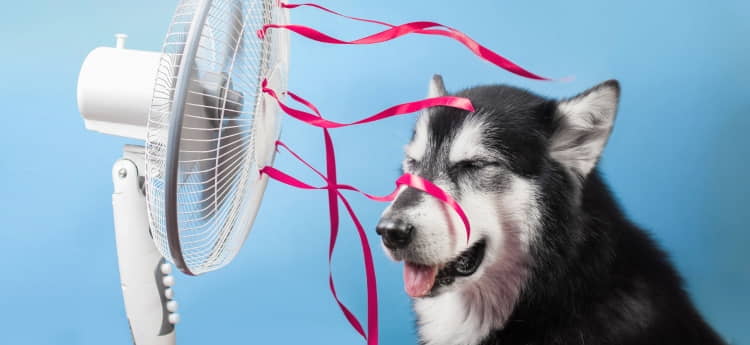Heatstroke is a serious condition that unfortunately occurs all too often in dogs and cats. Your pet can succumb to heatstroke when his body’s core temperature rises excessively – typically to 105 degrees Fahrenheit or higher. Dogs and cats are especially vulnerable to heatstroke because their furry bodies cannot sweat to dissipate heat. Rather they pant or breathe rapidly to cool themselves. When they are unable to effectively cool themselves, their core temperature rises rapidly. This can lead to serious and sometimes fatal complications including seizures, organ failure, and clotting problems. Any animal suspected of having heatstroke is experiencing a medical emergency and should receive immediate veterinary treatment.

Causes
Leaving a pet inside a parked car is the most common cause of heatstroke. Contrary to popular belief, “cracking a window” is not sufficient to protect your animal from this potentially deadly problem. The American Veterinary Medical Association (AVMA) urges pet owners to “love ’em and leave ’em” when it comes to bringing pets along with you in the car. “Please leave your pets at home when you can,” the AVMA cautions. “They’ll be safe and happily waiting for you to come home.” It also reports that a study published in the journal “Pediatrics” confirms that the interior temperature of parked cars rises steadily over time, even on days when temperatures are only moderately warm.
Pets can also experience heatstroke if they exercise too much on hot humid days, or if they are unable to get out of the sun and into some shade. Certain breeds of dogs are predisposed to heatstroke. These are the dogs with short noses such as Pekingese, pugs, Lhasa apsos, and Boston terriers. These short-nosed dogs have airways that are usually not as efficient at cooling when they pant. Overweight or obese dogs are also prone to heatstroke, as are dogs or cats with other airway problems. Cats are often subjected to heat stroke by sneaking unnoticed into parked cars or hot attics, then becoming trapped. It is important to account for all your animals after working in an area that could be a heatstroke trap.

Signs and Symptoms
Pets suffering from heatstroke will initially demonstrate signs of excessive panting, salivating, and discomfort. As symptoms progress, they may vomit or have diarrhea, become disoriented or even begin to possess seizures. If not promptly treated, this can lead to loss of consciousness, organ damage, and death. The normal temperature for a dog or cat is around 101.5°F. Pets suffering from heatstroke will have an elevated temperature – rectal heat ranges may reach 105°F or more in a heat stroke emergency.
Emergency First Aid
The Veterinary Information Network recommends first aid for hyperthermia in pets. Move your pet from the environment where the hyperthermia is occurring to a shaded and cool environment, and direct a fan on her. If possible, determine rectal temperature and record it.
Begin to cool your pet’s body by placing awesome, wet towels over the back of the neck, in the armpits, and within the groin region. You may also wet the earflaps and paws with cool water.
Transport her to the closest veterinary facility immediately. Even if you are able to remove your pet from the hot environment and initiate first aid, she will still need to be treated. Many of the complications from heatstroke do not begin to appear until several days after the incident – prompt veterinary care can potentially prevent or treat some of these complications.
Prevention
Any exercise should take place during the cooler hours of the day. This is especially important for young kittens and seniors, both of whom are very vulnerable to heatstroke. If your cat has just eaten, make sure you give her some time to digest before you begin playtime.
Wondering about Kitten Care Must-Know Tips for Raising Kittens ? Check it out on our latest post!


0 Comments